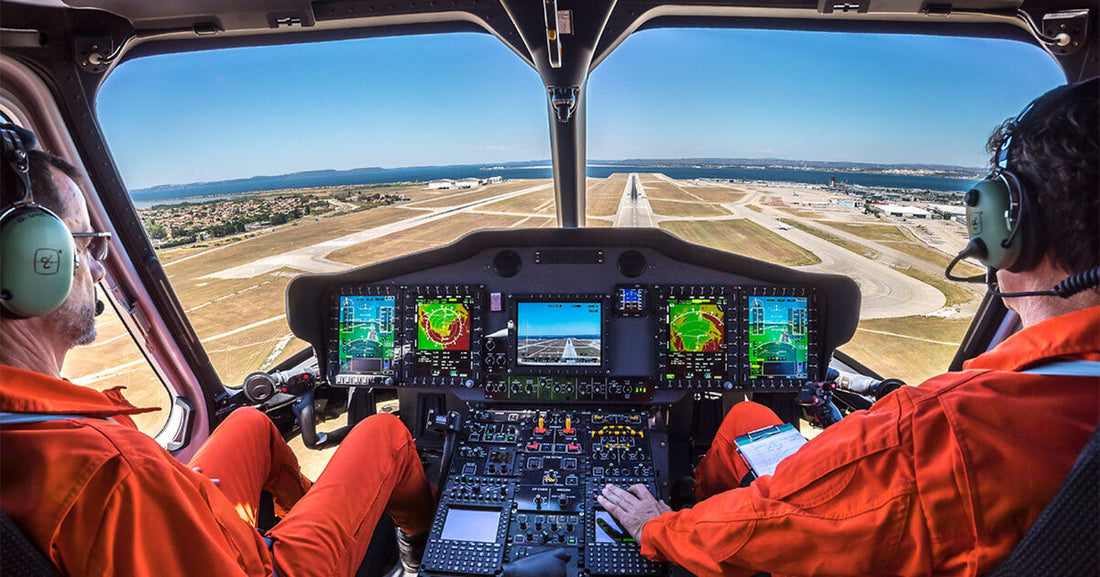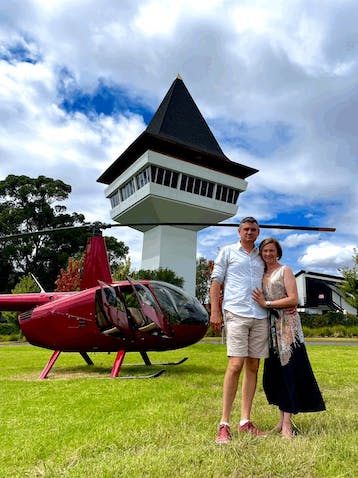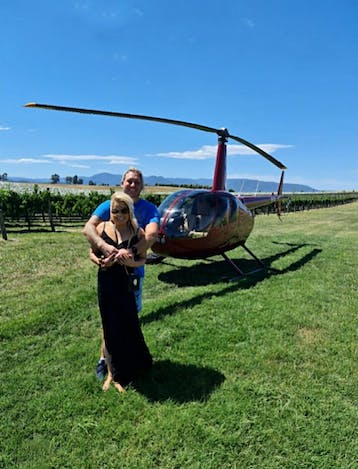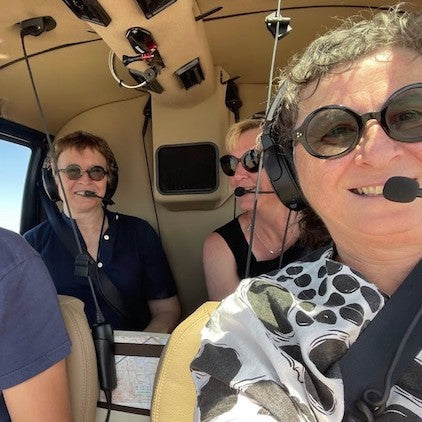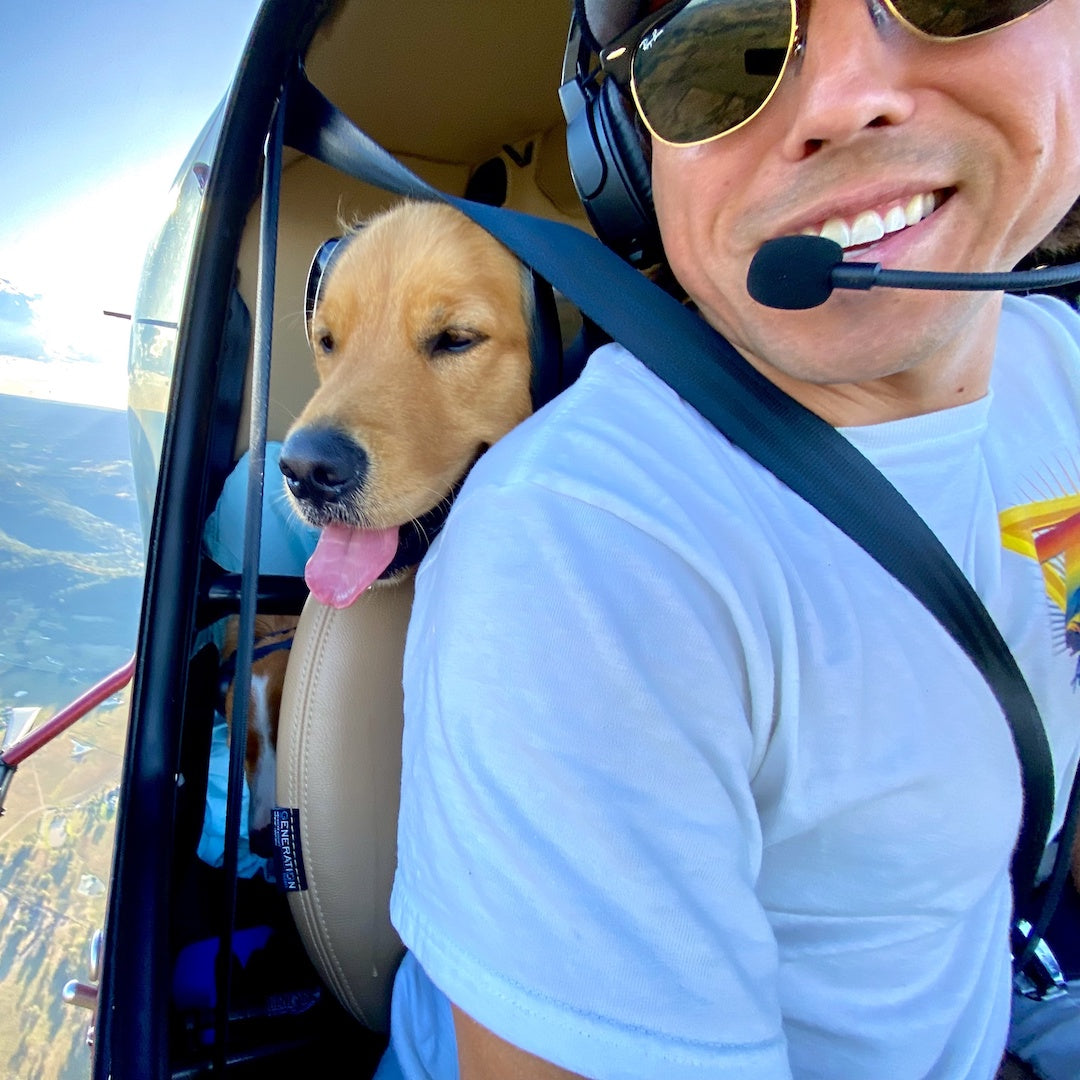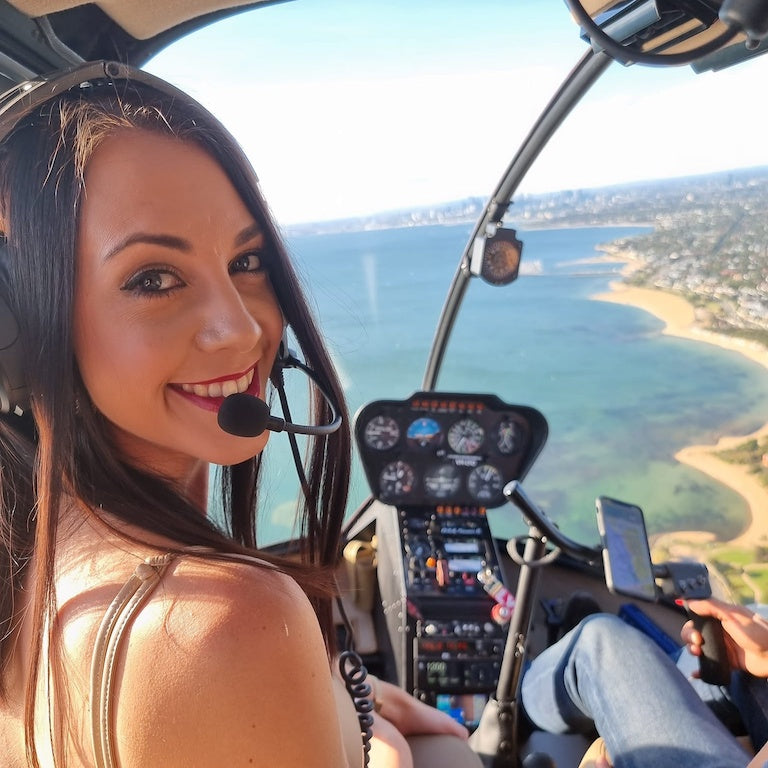If you are somebody who is interested in the world of aviation and helicopter flights, then you are in the right place. Today, we’re here to provide you with the ultimate guide about helicopters, including an in-depth history about their origins, basic principles about flight, what aspiring pilots need to do to get a license, and much more, all enhanced with stunning colour photos.
This article will provide you with all of the information that you need to know about the different types of helicopters, what they’re most often used for, and what some of the most popular helicopters in Australia used for tours and other purposes are. Let’s get this ultimate guide to helicopters started by providing you with some information about the history of helicopters.
Table of Contents
- History of Helicopters
- Uses of Helicopters
- How Helicopters Work – Basic Principles of Helicopter Flight
- Types of Helicopters and How Much They Cost
- Helicopter Manufacturing
- Overview of Popular Helicopters
- Piloting a Helicopter
- Innovations and Future Trends
- Why You Must Try a Helicopter Experience
- Common FAQs About Helicopters
History of Helicopters
A comprehensive guide about helicopters wouldn't be so useful if we didn't start by talking about where helicopters originated from. Helicopters are also known as Rotary wing aircraft, and their history dates back several centuries. Vertical flight has long been a concept of interest for aviators, long before it was physically possible. The helicopter has gone through many stages of evolution, and right now we want to take a look at the very beginning.
Origins of the Helicopter
Interesting to note is that the very first helicopters can technically be linked back to ancient China, where there are references to Rotary wing aircraft as early as 400 BC. Although this was only a children's toy, it does appear to be the beginning of the modern helicopter. At that point, it was just a stick with feathers attached to its ends which would fly into the air when spun quickly between the hands and released. It's a really primitive toy, but it effectively demonstrated the principle of vertical flight.
Much later, during the Renaissance, Leonardo da Vinci also had ideas about helicopters. He was the first known person to officially conceptualise a vertical flying machine, which he called a helical air screw or an aerial screw. Although Leonardo da Vinci never actually built this helicopter, he did create the blueprints that illustrated that it could technically work. Leonardo da vinci's design is often considered to be the earliest theoretical model of a helicopter.
Inventor of the Modern Helicopter
Although many had ideas of vertical flight, none of them came to fruition until the early 20th century, thanks to a Russian American engineer by the name of Igor Sikorsky. He is generally viewed as the inventor of the first modern and practically capable helicopter.
Sikorsky built his first model of a helicopter in 1909, although it didn't manage to lift off the ground. He studied aviation and engineering, and eventually moved to the United states, where in 1939, he successfully designed and piloted a prototype helicopter, VS-300. This early model featured a single rotor for lift as well as a tail rotor to counteract the torque produced by the main rotor.
This is of course the standard configuration that most helicopters today use. This then led to the R-4, the first helicopter which was mass produced and extensively used by the US military during World War 2 for a variety of purposes.
Uses of Helicopters
Now that we know where helicopters come from, we'd like to discuss what they are used for. The fact of the matter is that helicopters are very versatile aircraft and they can be used for a variety of purposes. Their ability to operate in a vertical manner makes them ideal for many different purposes, such as adventures and tours, search and rescue missions, medical aid, military operations, and more.
Tours and Adventures
One of the most common uses for helicopters is for tours and adventures. If you are somebody who likes to see things from a new perspective, a bird’s eye view, then a helicopter is definitely the way to go. For instance, there are plenty of helicopter tour providers in Sydney that offer private flights all over the country. Rotor One is such a helicopter tour company, currently offering one of the most scenic helicopter rides over Sydney, among many other tours. The article includes color photos to showcase the scenic views and enhance the visual experience of the tours.
Military Helicopter Flights
Of course, one of the first uses of helicopters was for military purposes. Within the military, they can serve many individual purposes, such as medical evacuation, logistical support, and troop transport.
More recently, helicopters have been converted into so-called gunships, which are outfitted with a variety of advanced weaponry and able to participate in combat missions.
One of the most popular versions is the AH-64 Apache, a very impressive attack helicopter. Another impressive military helicopter is the CH-47 Chinook, a troop and equipment transport unit.
Search and Rescue
Something that modern helicopters are often used for off the coast of Sydney is for search and rescue. The unfortunate reality is that sometimes people do go missing, especially when heavy ocean currents are involved. Maritime rescue operations are commonly performed with helicopters.
Helicopters can be equipped with medical facilities, winches, and navigation systems designed to perform advanced search and rescue operations. Helicopters are often used to respond to natural disasters where ground access may be impossible for regular vehicles.
Medical Aid
On a related note, helicopters are often used for medical purposes as well. On this front, what we're talking about is the rapid transportation of the patients who are in the utmost of critical conditions.
These helicopters are often called air ambulances, and they're used to get people in critical condition to medical facilities as quickly as possible. These helicopters are generally equipped with a variety of medical equipment and come with medical staff to provide people with life-saving procedures on their way to the hospital.
Training Purposes
The other main use of helicopters is for training purposes. Both civilian and military pilots have to undergo relatively stringent training programs to master the skills required to operate helicopters.
Remember that these are very complex machines and flying them is not easy. Therefore, operators have to be trained in their specific fields, whether it's for medical aid, military purposes, or otherwise.
How Helicopters Work – Basic Principles of Helicopter Flight
Although they might look simple, helicopters are fairly complex machines. There are several principles of aerodynamics that allow helicopters to fly, particularly when it comes to vertical takeoff and hovering. It is therefore essential to understand the various principles that allow helicopters to fly.
Thrust and Lift
The rotors of the helicopter are responsible for its lift, and these consist of multiple blades that turn around a central hub. The blades move through the air and create pressure, which helps to achieve lift. The rotation of the blades creates upward lift.
At the same time, the rotor blades also generate thrust. The pitch angle of the blades is changed in order to produce thrust in a specific direction. By controlling the rotors and adjusting the pitch angle, a pilot can control the amount of thrust and lift that is generated.
Anti-Torque and Stability Systems
While helicopters achieve lift and thrust through the main rotor, a helicopter would otherwise be uncontrollable if it were not for the tail rotor. A tail rotor is used to produce thrust in the opposite direction of the main rotor.
This prevents a helicopter from spinning in a circle. A helicopter can adjust the pitch of the tail rotor blades two controlled helicopters Yaw, therefore maintaining stability and directional control.
Hovering
One of the defining features of a helicopter is its ability to hover. A helicopter has to be able to generate enough lift to prevent it from descending, therefore allowing you to stay in one spot.
While the main rotor provides the lift required to stay upright, the anti-torque systems are needed to counteract the rotational forces that would cause the helicopter to spin in a circle. The combination of lift and anti-torque systems allows a helicopter to hover in a single spot.
Autorotation
The other principle that helicopters used to fly safely is known as auto rotation. This is a safety feature that allows you to controlled landing and descent in the event that an engine fails. During the auto rotation process, the main rotor blades still rotate and generate a bit of lift because of the upward flow of air through the rotors.
Types of Helicopters and How Much They Cost
Now that we know how helicopters work, it's a good idea to figure out what the different types of helicopters out there are, and generally how much they cost.
Single-Main Rotor Helicopters
First, we have single main rotor helicopters, which are the most common type. They have a single rotor on top of the helicopter that provides lift, along with a smaller tail rotor to counteract the torque.
These helicopters are often used for medical evacuation, transportation, search rescue, law enforcement, and more. Smaller models, such as the Robinson R44 may only cost a minimum of $300,000, while some of the most advanced helicopters in the world, such as the Sikorsky S-76 may cost over $10 million, with luxury models often exceeding $15 million.
Tandem-Rotor Helicopters
We then have tandem rotor helicopters, which feature 2 main rotors, one at the rear and one at the front, which are mounted on separate axles. This configuration is beneficial because it eliminates the need for a tail rotor, because the two rotors counterbalance each other.
These helicopters are often used for their large payload capacity and their great stability, which is why they are often used in heavy lift operations. They are great for disaster relief and cargo transport. One of the most notable examples is the Boeing CH-47 Chinook, which in some cases can exceed $35 million.
Compound Helicopters
Next, we have compound helicopters, which not only feature rotors, but additional propulsion systems as well. This might include wings to produce additional lift or push propellers. These helicopters are most often used in military applications where longer ranges and higher speeds are required. The potential costs of these helicopters, with the Sikorsky X2 being an example, is upwards of $50 million.
Tiltrotor Helicopters
As the name implies, a tilt rotor helicopter features a rotor that can tilt back and forth, which allows for great maneuverability and mobility. A prime example is the bell Boeing V-22 Osprey, which can cost upwards of $75 million. There are also civilian tilt rotor helicopters, with the bell nexus being a prime example, which may cost up to $10 million.
Coaxial Helicopters
Next, we have coaxial helicopters, which featured 2 main rotors that are mounted above each other on the same axis. They rotate in opposite direction. This is a great design because it eliminates the need for a tail rotor, because it provides control, stability, and lift.
These helicopters are often regarded for their compact size and maneuverability. They may be used in a wide variety of applications, with the Kamov Ka-52 Russian military helicopter being a prime example, Which can cost upwards of $15 million. Although, smaller models may only cost around $1 to $3 million.
Intermeshing Rotor Helicopters
Next on the list we have intermeshing rotor helicopters. They feature two rotors that are mounted beside each other, with the rotor blades intermeshing, all without hitting each other. This design also eliminates the need for a tail rotor, and it allows for greater stability and control.
These helicopters are useful for purposes that require heavy lifting, such as for logging, firefighting, and other heavy lift operations. One of the most common models is the Kaman K-MAX, which cost about $6 million.
Electric Helicopters
Finally, we have electric helicopters, which are much newer categories of helicopters. Although these are not defined by the rotor setup, they are defined by their use of electric motors that are powered by batteries or fuel cells instead of the use of regular combustion engines.
Electric helicopters have various benefits, including reduced emissions, quieter operation, and much lower operational costs. One of the newest categories is known as an E VTOL, otherwise known as an electrical vertical takeoff and landing aircraft, which are meant for urban use.
These are currently being developed for short range cargo delivery, air taxi services, and urban transportation. Although these are much newer helicopters, they currently are projected to cost anywhere between $300,000 and $2,000,000.
Helicopter Manufacturing
Some of the world's leading manufacturer of helicopters include Airbus Helicopters, Bell Helicopter, Robinson, Sikorsky, Leonardo, and Boeing, each of which have extensive lineups in their own rights.
Overview of Popular Helicopters
Although there are many different types of helicopters, far too many to list, there are a few models that we'd like to take a look at. Now, the models we list below are the main ones used in the Rotor One fleet. Who better to tell you about these amazing helicopters than the people who use them?!
Robinson R44
One of the most common helicopters used in the fleet, the Robinson R44 is a single engine helicopter with a very lightweight design. It's both reliable and affordable, making it a perfect option for adventures and tours. It was introduced in the early 1990s and has enough capacity to fit 3 passengers and a Pilot it can fly at a maximum of 204 kilometers per hour with a maximum range of 555 kilometers.
Robinson R66
Another common helicopter in the fleet is the Robinson R66, the newer version of the R44. This model features a turbine engine which allows for much better performance, a greater range, and a higher payload. This particular helicopter is able to seat 4 passengers and a Pilot while having a range of 648 kilometers. Although used for tourism, it's often used for executive transport as well, and even for light cargo transport and police work.
Airbus H125
Next, we have the Airbus H-125, a very high performance single engine helicopter known for its versatility and impressive features. Thanks to its turbo shaft engine, it's able to achieve speeds of up to 246 kilometers per hour while achieving distances of 631 kilometers. It's suitable for larger tours and groups as it can seat up to five passengers and a Pilot.
Airbus EC130
Another Airbus model, here we have the EC130, now also known as the H130. This is a lightweight single engine helicopter known for having a low noise signature and a spacious cabin, designed specifically to carry passengers on tourism and scenic flights. It features a turboshaft engine that is able to achieve speeds of up to 222 kilometers an hour while having a maximum operational range of 611 kilometers. Thanks to its ability to hold up to six passengers, it's rather perfect for tourism and adventures.
Bell 206 LongRanger
As you can probably tell by the name of it, this model is designed for long range use, as it has a maximum operational range of 693 kilometers. Thanks to its Rolls Royce 250-C30P turbo shaft engine, it's able to achieve a maximum speed of 213 kilometers per hour. It's an easy to maintain helicopter that is very reliable, and it can seat up to six passengers and a Pilot, making it an ideal option for helicopter tours.
Bell 505
We then have the Bell 505, which is actually just a few years old. This is a relatively new helicopter that features a variety of advanced technology, while still being affordable. Thanks to its state-of-the-art avionics, it's quickly becoming a fan favourite among helicopter pilots although it only has a seating capacity of four passengers, it does have an operational range of roughly 567 kilometers while being able to achieve a maximum speed of 232 kilometers per hour.
Bell 407
If you're looking for an impressive helicopter with a large cabin that can seat up to six passengers, then the Bell 407 is another great model to consider, an upgraded version of the 206 Longranger. It features A4 blade main rotor, advanced avionics, and an impressive Rolls Royce 250-C47B turbo shaft engine able to achieve maximum speeds of 246 kilometers an hour along with the maximum operational range of 625 kilometers.
Up and Coming – The Hill HX50 and Hill HC50
A relatively new helicopter manufacturer, Hill Helicopters, plans to release the Hill HX50 in 2025. These single engine helicopters will have a GT50 turboshaft engine able to achieve a maximum speed of 259 kilometres an hour, a range of 1300 kilometres, and carry 4 passengers and a Pilot. As you can tell, both the speed and operational range of these models are much better than anything else on the market. This is due to Hill's innovative approach to engineering and designing every component in-house, without relying on external manufacturers or OEMs within their supply chain. The future is certainly looking bright for helicopters.
Piloting a Helicopter
For those looking to enter the world of aviation and becoming a part-time or full-time Pilot, it might be time to learn how to fly a helicopter. With that being said, although piloting a helicopter can be extremely entertaining, it's also very challenging for beginners.
Obviously, you want to be the best helicopter pilot possible, so your passengers can feel safe during your flights. To that end, it's important to talk about the basic pilot knowledge you need to have in order to become a helicopter pilot, as well as the various certifications and license required to pilot a helicopter in Australia.
Basic Pilot Knowledge - Certifications and Licenses Required to Pilot a Helicopter in Australia
In order to pilot a helicopter in Australia, there are a variety of licenses and certifications that individuals need to get from the CASA or Civil Aviation Safety Authority. There are two main types of helicopter licenses that you can apply for, including a private pilot license and a commercial pilot license. Let's take a quick look at both of them.
PPL-H or Private Pilot License
To get a private pilot license for a helicopter in Australia, you must be at least 17 years old and proficient in the English language.
You must also pass a Class 2 medical examination to ensure that you are fit to fly. At this point, you'll have to complete 50 hours of flight training, including a minimum of 35 hours of dual instruction and 10 hours of solo flight.
You'll also need to pass a variety of written exams on various topics such as aircraft technical knowledge, navigation, air law, and human factors. Finally, you’ll then have to do a practical flight test.
CPL-H or Commercial Pilot License
Getting a commercial pilot's license in Australia for a helicopter is a little bit more difficult. To obtain a commercial helicopter pilot license, candidates have to be at least 18 years old and already hold a private helicopter pilot license.
To get a commercial pilot's license for a helicopter in Australia, candidates have to pass a class one medical examination, which is much more comprehensive than the Class 2 examination.
To get your license, you'll have to do at least 105 hours of flight time, including seventy hours as a pilot in command, along with specific cross country and instrument flight hours. As above, there are a variety of exams that you'll have to pass, as well as an extremely comprehensive flight test.
How to Become a Helicopter Pilot: Step-by-Step
Becoming a helicopter pilot in Australia requires a serious commitment, and there are many steps that you'll have to follow.
- First, you'll need to choose between military and civilian helicopter training.
- Although there might not be any strict educational requirements, having a good background in English, physics, and mathematics is beneficial.
- You'll need to obtain the required medical certifications based on the type of license you're going for.
- The next step is to research flight schools & choose a reputable one with a track record of producing successful Pilots - If you're based in Melbourne, we recommend Melbourne Heli. You'll have to begin your initial training for your PPL-H.
- You will take a variety of subjects in ground school, as well as flight training. Once you pass your exams and flight test, you'll be awarded your PPL-H.
- If you wish to continue, you can go for your commercial pilots license, by gaining additional flight hours, going to advanced ground school, and completing a more rigorous flight test.
- You may then also specialise, such as an low level rating, night rating or instrument rating, and gain a variety of additional ratings and endorsements.
Innovations and Future Trends
Something worth talking about is that there is a lot of innovation happening in the helicopter industry, with the future trending more towards electric vehicles. Specifically, here we are talking about electric vertical takeoff and landing aircraft (eVTOL), as well as regular electric helicopters.
The eVTOL is a new type of aircraft that uses electric propulsion to take off and land vertically, very similar to helicopters. This is a rapidly growing market, and it's designed to provide quiet, efficient, and sustainable short-range transportation. Although eVTOLs don't exactly look like regular helicopters, they do have a variety of benefits.
For instance, the use of electric propulsion means that zero emissions are produced during the helicopters operation, therefore reducing the overall carbon footprint. At the same time, electric motors are also much quieter than combustion motors, allowing for a more comfortable and enjoyable experience.
Also worth noting is that electric aircraft generally have fewer moving components than combustion engines, which means that there are reduced maintenance needs combined with reduced maintenance costs. The fact of the matter is that new battery technology, innovations in aerodynamics, and new materials are being used to create highly efficient vertical takeoff and landing vehicles, the true next evolution of the helicopter.
Some of the biggest players currently producing these eVTOLs include Joby Aviation, Archer Aviation, Lilium, and Beta Technologies.
Why You Must Try a Helicopter Experience
Before we round things off by answering some of your most frequently asked questions, let’s just talk about why you absolutely have to try a helicopter experience. Okay, so maybe you’re not ready to take your pilots exam and start flying your own bird, but going on a private helicopter tour is always a great option, and that’s true for a variety of reasons. This article includes color photos to showcase the breathtaking views and enhance the visual appeal of the helicopter experiences.
A New Bird’s-Eye View
Us humans are generally relegated to being on the ground, and let’s face it, that’s no fun. Sometimes there’s just no better way to view the world around us than from a bird’s-eye view. The fact of the matter is that looking down from the heavens above is exhilarating and exciting. This article includes color photos to showcase the stunning bird’s-eye views and enhance the visual experience.
For instance, if you happen to be in Sydney, while viewing the Harbour Bridge from the ground is perfectly fine, taking a private scenic flight over Sydney Harbour Bridge and other Sydney attractions provides you with a whole different experience. Being able to view the world like an eagle is a feeling like nothing else!
A Scenic Ride
If you’re not up for the exhilarating feeling of being so high in the sky, at the very least, riding in a helicopter provides you with a scenic ride. If you like viewing the natural beauty that Sydney and its surrounding areas have to offer, then doing so from a top-down vantage point is always best. This article includes color photos to showcase the beautiful scenery and enhance the visual experience of the rides.
For instance, one of the main attractions close to Sydney are the Blue Mountains. However, they just don’t look the same from the ground as they do from the air. If you’d like to see what this beautiful mountain range has to offer and other scenic flights, Rotor One’s guide to the best helicopter rides in Sydney is exactly what you need.
A Romantic Way to Propose
If you're looking for the perfect way to pop the question and propose to the person that you want to spend the rest of your life with, and there's no better way to do so than from the inside of a helicopter cabin.
Rotor One Offers exclusive helicopter proposal packages where you get to fly over some of Sydney’s most iconic landmarks, and then at the perfect moment, stop in mid-air and perfect silence as you ask the favorite person in the world who spend the rest of their life with you. With such breathtaking views, any potential suitor would be hard-pressed to say no.
Going On an Adventure with Friends and Family
If nothing else, going on a helicopter ride provides you and your friends with the opportunity to go on an adventure. The fact is that Sydney and the surrounding area has plenty to offer, with lake Macquarie being a prime attraction.
At Lake Macquarie, you'll find 8 at Trinity, one of the most sought after and renowned fine dining establishments in the whole country. If you take a private helicopter tour to 8 at Trinity, you'll get a $300 gourmet lunch voucher, two hours of ground time, and a private flight that starts and ends at the Sydney airport.
So Many Helicopter Experiences to Try!
The bottom line is that between the possibility to propose to your future spouse in a helicopter, going on adventures to wineries, and viewing the best that Sydney has to offer from a bird's eye perspective, we recommend going on at least one helicopter ride in your life. We guarantee that you won't regret it! If you'd like help choosing the ultimate winery destination by helicopter, see our guide to the best helicopter wine tours in Sydney.
Common FAQs About Helicopters
To call it a day, let's quickly answer some of your most pressing questions about helicopters.
How much does a helicopter cost?
A helicopter can cost anywhere between $300,000 and upwards of $75 million, depending on the make and model.
How fast can a helicopter fly?
At this time, the fastest helicopters can fly in excess of 370 kilometers per hour.
How high can a helicopter fly?
Most regular helicopters can reach altitudes of 10,000 feet, with some models possibly being able to reach higher altitudes.
Can you buy a helicopter for personal use?
Yes, you can purchase a helicopter for personal use.
How safe are helicopter rides?
Helicopter rides are perfectly safe when the helicopters are maintained according to standards, and when piloted by experienced pilots.
Can I land a helicopter anywhere?
No, helicopter cannot land anywhere, especially in sensitive or highly populated areas.
Is owning a helicopter worth it?
Owning your own helicopter may not be worth it unless you have excess funds to spend on such a luxury. However, if you want to experience what it's like to ride in a helicopter, we recommend taking one of the many helicopter tours available from Rotor One.

